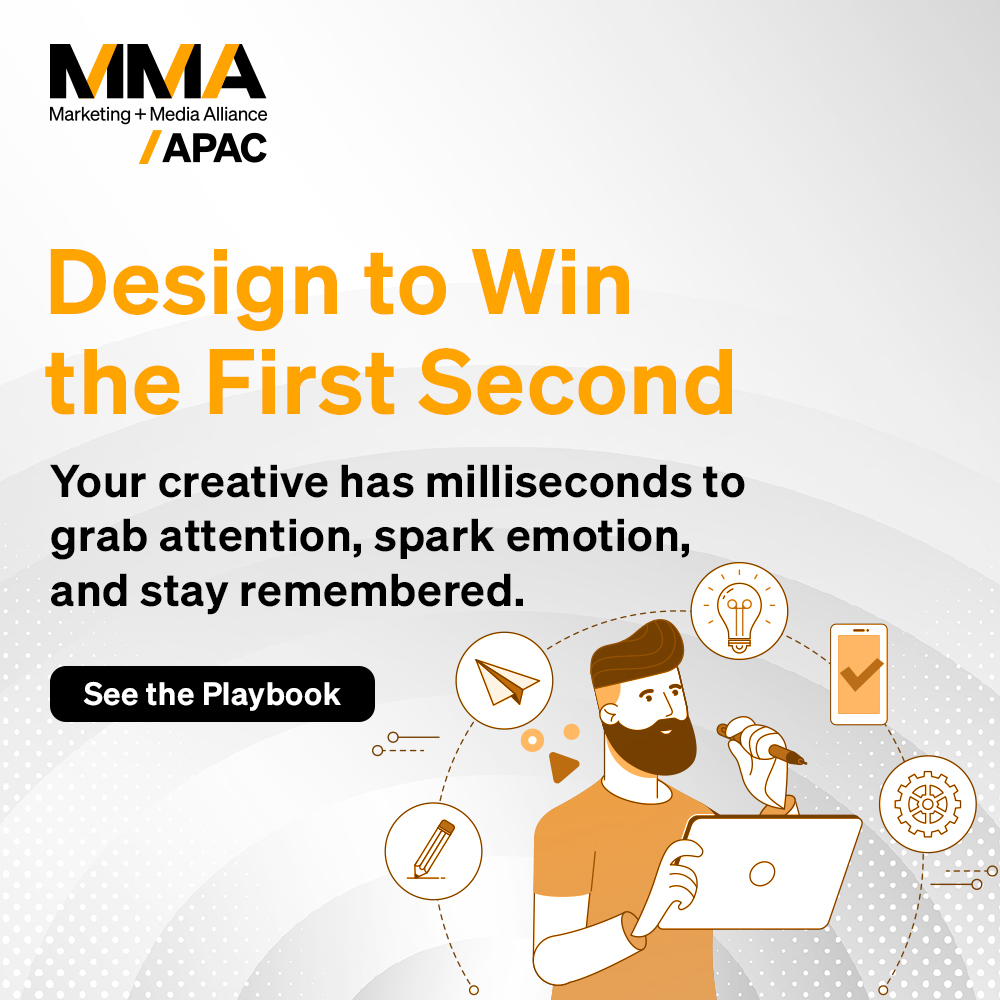
At the start of 2025, marketing leaders across APAC entered the year with curiosity. By mid-year, curiosity has given way to clarity, and in many cases, urgency.
This isn’t just another tech cycle. It’s a systems-level reset. AI is no longer a sandbox. Retail media isn’t just a line item. And attention, once considered a fuzzy metric, is quickly becoming the north star for media and creative performance.
Here’s a look at what’s actually changed in Q1 and Q2, why it matters, and how MMA Global’s initiatives are helping marketers prepare for what’s next.
Q1 & Q2: The Systems Shift Has Begun
AI Moved From Capability to Infrastructure
In previous years, AI was often treated as an enhancement layer or an optional productivity boost. But in 2025, something changed: AI became structural.
Across APAC, marketing teams began using AI to rebuild workflows, not just automate tasks. GenAI tools were deployed to plan cross-market campaigns, localise content at scale, simulate audience behaviour, and test creative before launch. Some brands even trained proprietary models using first-party data and proprietary insights.
Why now? Because speed alone was no longer enough. Marketers needed precision at scale, and AI provided the infrastructure to achieve it. It’s not just what AI can do. It’s how it connects the dots between data, decisions, and delivery faster than any traditional workflow could.
Retail Media Became a Strategic Investment, Not a Test Budget
Retail media has been simmering for a while. However, in early 2025, it gained traction in the mainstream, particularly in markets such as India, Indonesia, and Southeast Asia.
Why the sudden shift? Retail media platforms offered something other channels struggled to deliver in a post-cookie world: closed-loop accountability. Brands could finally see if an impression led to a sale and do so in real-time, inside a commerce ecosystem where the consumer journey was already unfolding.
The conversation moved from “Should we try retail media?” to “How do we integrate it into our full-funnel strategy?” Marketers began asking harder questions:
- How do we compare ROAS across retail networks?
- Are we overspending on search within retail vs. discovery outside it?
- What does retail media look like when the creative is AI-generated and format-adaptive?
That’s the next frontier. Not just buying smarter, but building smarter for retail environments.
Attention Became the New Baseline
As budgets tightened and CPMs increased, the industry began to challenge the value of impressions and viewability. What really matters: Did the audience engage meaningfully? Did the ad hold attention long enough to make a dent in memory?
This isn’t theoretical anymore. Brands began testing attention-based buying models and using neuroscience-backed tools to evaluate ad effectiveness, frame by frame, across channels.
It’s a quiet revolution, but a necessary one. Because as ads become more dynamic (thanks to AI) and more embedded in commerce (thanks to retail media), traditional performance metrics fall short. Attention gives us a shared language to understand what’s truly working.
Privacy-Safe Measurement Became a Strategic Advantage
While the rest of the world grapples with signal loss, marketers in the APAC region have moved faster on the evolution of attribution. In markets like Australia and Singapore, we have seen the widespread adoption of clean room collaborations, CDPs, and model-based experimentation.
Measurement shifted from focusing on perfect tracking to designing resilient systems that respect privacy while still enabling growth.
This shift is especially important as AI becomes embedded in media buying and targeting. Without durable measurement frameworks, marketers risk creating performance without accountability.
Where MMA Global Fits In
These aren’t isolated changes—they’re connected by a common truth: marketers need better systems, not just better tools. And that’s exactly where MMA Global’s programs come in.
Built to help marketing teams adapt with confidence, MMA’s APAC initiatives focus on the “how”—with operational frameworks that turn strategy into execution.
Here’s how they’re making an impact:
- CAP (Consortium for AI Personalisation): Develop high-performing personalisation engines that do not rely on personal data. Real-world pilots demonstrate a 259% ROI uplift while maintaining a privacy-first approach.
- First Second Strategy: In a world of infinite scroll, this program teaches brands how to capture attention within the first 400 milliseconds, where 80% of impact is made.
- MMGF™ (Multi-Moment Growth Framework): A powerful model that helps marketers identify and activate high-response audiences, leading to 5x more efficient growth across the funnel.
- Brand as Performance (BAP): Designed to help CMOs connect long-term brand-building to short-term business outcomes, with metrics that bridge the storytelling-performance gap.
- Data Maturity Tool: A benchmarking framework that helps marketing teams assess and elevate their data infrastructure, from signal collection to activation and optimisation.
These programs aren’t just informative. They’re operational. They give teams the confidence to make bold shifts because they’re backed by industry-wide learning and shared accountability.
Explore them here: MMA Global APAC Programs
Q3 & Q4: What Comes Next
AI Governance Will Become a Business Imperative
As AI advances in execution, the spotlight will shift to accountability.
- Where is the training data coming from?
- How are outputs being validated?
- Who’s responsible when an algorithm makes a flawed recommendation?
These are not technical questions. They are marketing questions, and brand leaders will need to have answers.
Retail Media Standardisation Will Accelerate
With more players entering the space, marketers will push for standardised measurement frameworks, interoperable data formats, and third-party validation. There’s a growing appetite for regional consortia that define what “good” looks like across retail platforms.
Expect APAC to lead this charge, not just because of market size, but because of its commerce-native consumer behaviour.
Creative Will Become Dynamic, Local, and Learning-Driven
What started as template-based automation will evolve into format-aware, culturally tuned creative engines. The best-performing brands will generate content that learns, changing tone, structure, or imagery in real time based on audience behaviour and channel performance.
And in APAC’s linguistically diverse, mobile-first markets, local nuance will outperform global consistency every time.
The Bigger Picture
If the first half of the year was about acceleration, the second half will be about alignment.
Marketers must align their tools with their teams, their measurement with their media, and their creativity with their commerce strategy. AI and retail media aren’t new channels or tools; they are catalysts. What they’re catalysing is a new kind of marketing system: connected, adaptive, and outcome-led.
MMA Global is here to help you build that system: with rigour, peer learning, and a shared commitment to what works.



















